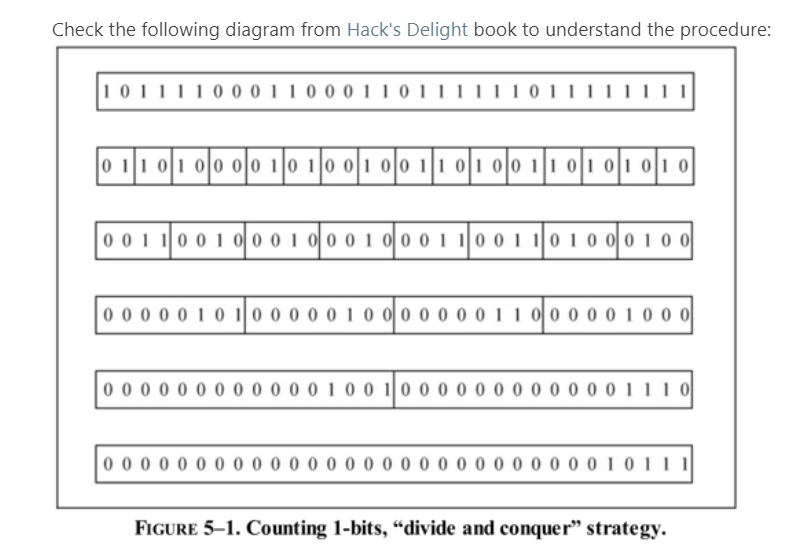题目内容
Write a function that takes an unsigned integer and return the number of '1' bits it has (also known as the Hamming weight).
Example:
Input: 00000000000000000000000000001011
Output: 3
Explanation: The input binary string 00000000000000000000000000001011 has a total of three '1' bits.
Example 2:
Input: 00000000000000000000000010000000
Output: 1
Explanation: The input binary string 00000000000000000000000010000000 has a total of one '1' bit.
Example 3:
Input: 11111111111111111111111111111101
Output: 31
Explanation: The input binary string 11111111111111111111111111111101 has a total of thirty one '1' bits.
Note:
Note that in some languages such as Java, there is no unsigned integer type. In this case, the input will be given as signed integer type and should not affect your implementation, as the internal binary representation of the integer is the same whether it is signed or unsigned.
In Java, the compiler represents the signed integers using 2's complement notation. Therefore, in Example 3 above the input represents the signed integer -3.
Follow up:
If this function is called many times, how would you optimize it?
分析过程
-
题目归类:
2进制,底层逻辑 -
题目分析:
基本问题太简单,摘一个leetcode中的解法
Explanation:-
The best solution for this problem is to use "divide and conquer" to count bits:
-
First, count adjacent two bits, the results are stored separatedly into two bit spaces;
-
Second is to count the results from each of the previous two bits and store results to four bit spaces;
-
Repeat those steps and the final result will be sumed.

-
-
边界分析:
- 空值分析
- 循环边界分析
-
方法分析:
- 数据结构分析
- 状态机
- 状态转移方程
- 最优解
-
测试用例构建
代码实现
public class Solution {
// you need to treat n as an unsigned value
public int hammingWeight(int n) {
int sum = 0;
for(int i = 0;i<32;i++){
sum+=n&1;
n>>=1;
}
return sum;
}
}